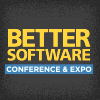Better Software Conference & EXPO 2007

PRESENTATIONS
|
Static Analysis and Secure Code Reviews
Security threats are becoming increasingly more dangerous to consumers and to your organization. Paco Hope provides the latest on static analysis techniques for finding vulnerabilities and the tools you need for performing white-box secure code reviews. He provides guidance on selecting and using source code static analysis and navigation tools. Learn why secure code reviews are imperative and how to implement a secure code review process in terms of tasks, tools, and artifacts. |

Paco Hope, Cigital |
|
Stop Spyware through Improved Software Security Practices
As organizations spend more time and money to protect their systems from security breaches, the threat landscape is shifting from widespread attacks to specifically targeted, malicious spyware invasions. Gerhard Eschelbeck presents current research on spyware and how it is different from-and potentially more deadly than-traditional computer viruses. Gerhard offers insights into the changing attack trends from automated worms to targeting users directly via email and the browser. |
|
|
Taking Personal Ownership for Software Development Success
The responsibility for building effective software teams is more than just a management task. Indeed, in some situations, management could easily rationalize that there is limited business value in improving team effectiveness. Our current reliance on processes, methodologies, and tools is misguided in that it largely looks outward rather than inward for solutions. There is a better way! Jim Brosseau examines the challenges and barriers we face with typical approaches when attempting to build effective teams. |
|
|
Ten Habits of Highly Effective Measurement Programs
Accurately measuring product quality and process capabilities is challenging in any software organization. Most organizations do not attempt any real measurement at all, and the ones that do often fail miserably. In fact, the industry success rate for software measurement programs is terribly low-some say less than 25 percent. |
|
|
The Agile-Traditional Development Cooperative
In large organizations, it is simply not practical to just "flip a switch" and have your development department start doing full-on agile all at once. Newer agile teams and more traditional or waterfall teams find themselves having to work together during a long transition period or even permanently. |
|
|
The Principles and Practices of Scrum
Scrum is best defined as an agile, lightweight process used to manage software and product development using iterative, incremental practices. Rob Myers gives a brief explanation of the philosophy behind Scrum, the Scrum method, and the roles and responsibilities of the players in a Scrum project. Scrum can be wrapped around different software engineering methodologies, including Extreme Programming (XP), Rational Unified Process (RUP), spiral development, and others. |

Rob Myers, Net Objectives |
|
The Testing Center of Excellence
When it comes to system and acceptance testing, project teams often end up scrambling for resources, late in the project schedule. The test team must be assembled or expanded, learn the application, and improve their skills before testing begins. When the project ends, the team is downsized or disbanded and its knowledge, skills, and experience are all diminished or lost. |
|
|
Timelines, Artifacts and Owners in Agile Projects
Knowledge of agile development processes is spreading through publications, training, and experience. And now organizations are taking on larger projects using agile methods. However, as more teams are involved in agile practices, organizations often stumble over what information is created and used during the various stages of an agile project and who is responsible for developing and reporting this information. |
|
|
Using Agile Management Techniques on Traditional Projects
Project managers generally run a project based on the development methodology used by their company. If a product is developed in a traditional, more waterfall manner, project managers will slip into management techniques of heavy documentation, weekly status meetings and reports, and a “tell them what to do” mentality. On the other hand, if a product is being developed in an agile manner, then minimal documentation, daily stand-up meetings, and team-based direction will be more the norm. |

Brian Watson, Quick Solutions, Inc. |
|
Using Lean Thinking to Align People, Process, and Practices
The operational structure of many organizations fails to support their software development teams. Continuously creating and reforming teams, isolating development from the organization, lack of participation by customers, and rapid task switching cause huge amounts of waste in development. Although agile development practices have made great strides in the last ten years, they have largely ignored the issue of the structure of the organization. |
|


